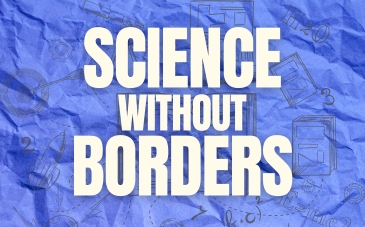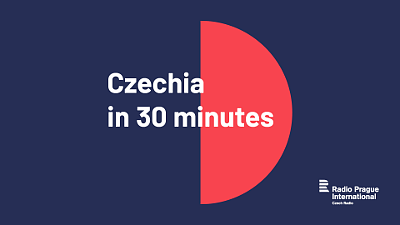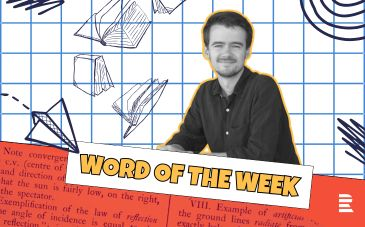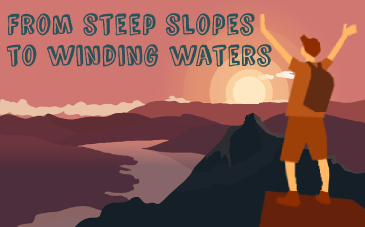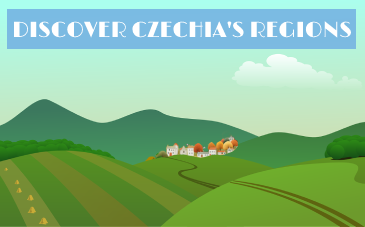Martin Dušek maps anarchic Czech approach to construction in new film
Director Martin Dušek’s latest documentary looks at the issue of taste, primarily when it comes to how Czechs handle home construction/renovation and the urban landscape. A DIY approach is deeply ingrained and many refuse to hire architects, regarding their services – says a speaker in the film – as something “extra”. I caught up with Dušek shortly after producer Czech Television broadcast the film, which is called Journey to Disfantasy.
As in some of your previous documentaries, you yourself are an active kind of character in your new film? What is the appeal of that approach, of putting yourself front and centre?
“I think in a way it’s easier to be there and control the situation, so it’s quicker to get to something. That’s one reason, or one thing behind it.
“And the other one is, of course, that I was born partly as an exhibitionist. So it’s also to fulfil my inner needs to express myself [laughs].”
You have to react to situations and to people – do you always feel like you’re managing that well? Something unexpected happens and you immediately have to ask the right question, or do the right thing.
“I don’t know – what do you think? [laughs]”
I think you’re skilled at it, but I wonder sometimes if you have moments where you think afterwards, “I’m having a bad day, I could have done that better”?
“Well, sure. But you have to prepare for it.
“You have the same laws in Germany but you don’t see so many colourful houses covered with these Styrofoam panels.”
“For example when I was doing [2011 documentary] Mein Kroj, which was about me going to a Sudeten German meeting in Germany in a special folk costume I’d constructed myself.
“I knew that perhaps they won’t all be OK with me being there, taking part, so I knew they were going to get rid of me.
“So I was preparing for it. I was asking a lady at the hotel breakfast, What’s German for ‘they are trying to expel me’?
“She told me and because my German is naturally funny I remembered it wrongly and then I was shouting it in some funny distorted form of the sentence.
“So that’s how it usually works.”
Cesta do Nefantazie/Road to Disfantasy can be watched here (English subtitles not available): https://www.ceskatelevize.cz/porady/13902151538-cesta-do-nefantazie/
What was the original idea for the new film?
“In the time of Covid I was spending lots of time at our house in Northern Bohemia; I was writing a script for a feature film there.
“Since everything was so quiet and I had lots of time to walk and drive around, I suddenly saw how ugly the houses and the villages were.
“And I decided to do something about it, about the Czech landscape of villages and houses being renovated in a weird, specific way, with all these colourful facades, with Styrofoam covering everything.
“So I came up with this TV programme and I set off on a journey in my grandfather’s old Škoda, which I kind of adjusted so that I fit in.”
READ ALSO
In the film the car is covered in pink Styrofoam – and this is a reference to the fact that Styrofoam is used a lot in building and renovations? I didn’t really get the whole concept with the Styrofoam.
“You know, it’s weird – in the EU we are living under the same laws and rules.
“So basically you’ve got this tendency of making houses more energetically…”
Insulated I guess?
“Yes, insulated. I don’t know why, but you have the same laws in Germany, for example, but you don’t see so many colourful houses covered with these Styrofoam panels.
“I didn’t really know why, and I wanted to discover it.”
You’re from North Bohemia and the film begins in your part of the world. Is there something specific to that region that you think says something about Czech taste?
“I think that in Northern Bohemia all Czech phenomena are present with much stronger intensity than everywhere else in the Czech Republic.
“So, for example, when you see weirdly restored and repaired houses in the Czech Republic, you have 10 times more of them in Northern Bohemia.
“They are more colourful, the Styrofoam walls are thicker, so it was natural that I started to work on the TV programme Cesta do Nefantazie, Journey to Disfantasy, just there.”
You visit Ústí nad Labem – why that particular city?
“Well, my journey starts at our house in North Bohemia and Ústí nad Labem is the closest bigger city, so I had to go there.”
It’s also a pretty ugly city.
“During communism, people weren’t used to using professional services to build or renovate their houses, because they weren’t there.”
“Yes, it’s like the centre of everything that’s wrong about public space in the Czech Republic.
“It used to be a beautiful city, and a very advanced city, in a way but what happened after the Second World War totally ruined all the urban structure.
“Stuff like heavy industrialisation came. It was present there before but this was something new: Soviet style. They demolished whole blocks of houses during communism.
“You might say that after the revolution there might be some positive changes in how the city is structured, but no – they demolished several blocks of houses several years ago because a new Lidl store was going to be there, right in the middle of this beautiful city.
“So this evil process hasn’t stopped there, and I was also interested in how that was possible – and if there is any chance to change it.
“I found three young architects who are now working for the city, but they are really only three people, a small office, and the thing they are fighting is really huge and evil, so I’m sure if they might succeed.”
You also go to parts of Moravia that were hit by a tornado a few years ago and you speak to a local architect. He says that people regard hiring an architect as something “extra”. Does that mean that people will just somehow build a house, or renovate a house, themselves, that they will design it themselves and just won’t pay for a professional?
“Yes. I think people in the Czech Republic are not used to using the service of an architect.
“I think it has several reasons. During communism, people weren’t used to using professional services to build their houses, or to renovate their houses, because the services were not there.
“They got used to doing everything by themselves.”
DIY – do it yourself.
“Yes, the whole DIY culture, which is of course interesting, and I’m also part of it [laughs].
“But building a house is a very complex thing and you should use the advice, or the plan, of a dedicated professional.
“Because you are not going to do surgery on yourself when your stomach hurts – but still you decide to build your house yourself, just with the help of DIY stores, and then the result is funny.”
Do you feel that architecture is the particular area where Czechs can show bad taste, in your view? Or does it go for everything?
“Well, it’s difficult. There are certain things that people say about how Czechs dress. Like there is this model of socks in sandals.”
That’s probably cool now!
“When you go to Vienna the people are dressed very similarly to Czechs.”
“When you go to Vienna the people are dressed very similarly to Czechs.”
“It’s cool. You can see it on the catwalk during fashion shows now, in Italy [laughs], so we have become a world trend.
“You’ve got this habit of wearing sports clothing for everyday life.”
Like a snowboard jacket in the city?
“Yes, but I’ve registered that this is also coming into fashion.
“So you can make fun of it, but for example when you go to Vienna I think the people are dressed very similarly to Czechs.”
This is maybe my main question: Is there something specifically Czech… or is there a specific type of Czech bad taste?
“I’m not sure. But I was more concerned with the landscape and with houses and cities in my documentary, maybe, and the lack of urban planning in Czech cities and villages.
“Because the villages, and cities, are not developing in a good manner people have to use certain tools and the whole situation is becoming distorted and it’s not visually appealing – but it’s also not good for people’s everyday life.
“For example in the village where we have our house there is such heavy traffic and nobody does anything about it. It’s not even necessary.
“So people are putting up concrete fences, which are ugly and limit their view and their contact with their surroundings.
“Of course it’s partly in their nature, that they don’t care much about their surroundings, they care about their garden, so the connection is not there naturally.
“So this is even enhancing those characteristics, for example. So the whole thing is more complicated than just socks and awful facades – it’s more structural.”
One big aspect of life in this country, I believe, is low wages, especially outside Prague. Is poverty, or simply a lack of money, a factor in all of this? If people won’t spend money on an architect, is it because they’re just poor?
“Of course you can say that the cheap solutions are ugly and that’s why they are going for them.
“But when you see, for example, the houses of people who do have money, they are even uglier.”
“When you see, for example, the houses of people who do have money, they are even uglier.”
“But when you see, for example, the houses of people who do have money, they are even uglier – because they have more money to spend on ugly stuff.
“So I don’t think that poverty is the issue. That’s one thing.
“The second thing is that a good architect can also save you some money. And some basic materials that are OK – which are natural and authentic – are not necessarily expensive.
“So people just don’t think like that.”
Somebody told me the idea of using these municipal architects’ offices is quite a new thing and that’s it actually successful. Was that your impression, that the people like those you met in Ústí nad Labem are making some kind of impact, not only there but also elsewhere?
“Yes, it’s getting better. Even my hometown, Česká Lípa, they now have the manuals concerning public space: how advertisements should look on buildings, etc.
“So it certainly has some positive development, or people are starting to think about this kind of stuff.”
As an Irish person, one of the things I find most annoying here is shop fronts. You can have any kind of design on the front of your shop, it can be ugly as hell, it can be totally out of character with the rest of the street – and nobody stops you. It feels like anything goes here.
“Well, yes. Because after the revolution – which now is so distant in the past, but it still influences everyday life in the Czech Republic, I think in many ways – suddenly people could make their own shops and businesses and small businesses.
“They thought that they were suddenly free to do what they want.”
And regulations are blocking their freedom?
“Yes, exactly, and they didn’t have any background to do that stuff properly or nicely, aesthetically or authentically – though one can say that they were being authentically tasteless [laughs].
“But yes, I think that it’s still the heritage of this area.”
Also in the film we see you going to Mladá Boleslav, the home of Škoda cars, to meet their head designer, Oliver Stefani. What was your idea in meeting him?
“Because of course I had designed my own car – I added a modern layer that would express every Czech public space – and of course I wanted to show it the designer in chief of all the Czech cars of the present.
“Also I wanted to ask him why current cars look so ugly. When I was a kid the car was a very special object for me; it was an object of desire.
“Of course that was because we didn’t have lots of nice Western cars here.
“But when you now look around, the car has turned into an object with the attractiveness of a vacuum cleaner. It’s not this special thing anymore.”
What did the head designer of Škoda say to your point about cars being too bulky or whatever?
“He was saying about the safety features that must be there and that they make the car kind of swollen.
“But also he was saying that they have to invent a feeling of modernness and they have to redevelop the shape of the car every few years.
“They have to change it all the time to be innovative. So the cars are changing shape, or design, just for its own sake, or for the sake of ‘innovation’.
“So it doesn’t make any aesthetic sense – it’s only marketing and business and industry.
“Then this dictates how the stuff looks. And that’s not only with cars but also with technologies and with materials for building houses.
“Maybe people in Germany have slightly better taste, or their regulations are done by saner people.”
“Because you have this concrete stuff that you simply assemble. And all the technologies are coming because big companies want to produce cheap stuff – so this then influences the taste of people and how the world around them looks.
“And maybe in the Czech Republic people don’t care much about how it looks and they don’t know how it should look.
“Maybe people in Germany have slightly better taste, or their regulations are done by saner people than here.
“But, you know, I think that the main point is to go against the pressure of the industries, that they trying to dictate their taste – which comes out of materials and the processes being made.”
Speaking of pressure, the Škoda people would not let you drive onto the grounds of Škoda in your 1960 Octavia covered in Styrofoam?
“Yes, the PR managers said that my car should not be connected with design of Škoda cars.
“So they didn’t allow my new friend Oliver a trip in my special car.”
In one moment you speak to your old art teacher and you ask her, Where can people learn good taste? Did she give you an answer? Or do you have an answer? If you accept that Czechs don’t have great taste, what can be done to improve this?
“I don’t know. Maybe to invite the Sudeten Germans to come back?
“It’s like a gradual process and also concerning buildings I think time will tell what will stay and what will be demolished and what will be changed in the future – because the people will consider it ugly then.”
Does it need also for people, essentially cool people like the young architects from Ústí nad Labem, to accept that they won’t live in Prague, that they will live somewhere in the regions and try to make the regions better?
“Yes, yes, definitely. Maybe because the flats in Prague are so expensive more and more people will go back to the smaller towns and villages to cultivate them.
“But I’m not sure if the locals will welcome those people telling them how to live and how to repair their houses [laughs].”
Related
-
Ústí nad Labem Region
This region boasts the natural beauty of the Ore Mountains, the Elbe waterway. The sandstone rocks of Bohemian Switzerland.









